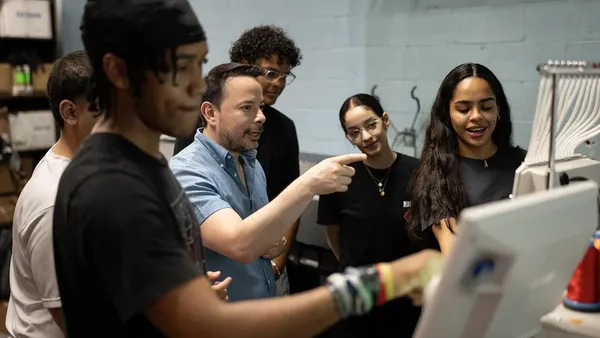Dive Brief:
- At Massachusetts' Revere High School, a policy of student-centered learning means students study what they’re interested in — and not just what teachers think students should focus on during lessons. Students at the school who took an English class that studied the TV show “The Walking Dead” were more likely to take AP English as a senior than those who took a different English course, according to The Hechinger Report.
- Since shifting to student-centered learning in 2010, children’s scores on the Massachusetts Comprehensive Assessment System English test at Revere High School rose dramatically: Just 50% of black students and 63% of Hispanic students earned a proficient or higher in 2009, but those numbers rose to 82% of black students and 77% of Hispanic students by 2017.
- As a result, the school district is now one of six that is part of the Massachusetts Consortium for Innovative Education Assessment, training teachers at schools around the state, and Principal Lourenco Garcia is also now the executive director of data and accountability for the Revere district to help push the idea of student-centered learning to other schools.
Dive Insight:
The concept of student-centered learning is one catching on far beyond the walls of Revere High School.
At Georgia's Luella Middle School, students spend Mondays during their four core classes — math, science, social studies and English language arts. But afterwords, they select an area where they think they need help and are allowed to choose the study method they want. Meriden Public Schools in Connecticut lets students decide which courses they’re ready to take by removing many of the prerequisites often required. The district also lets students earn credit for personalized learning experiences, according to its Road Map to Student-Centered Learning.
The JFF, a group that looks at the intersection of education and America’s workforce, launched a Student-Centered Learning Research Collaborative in 2016 which includes five research studies examining the effect of student-centered learning on outcomes, to how different populations can be impacted from this learning method.
In the end, the JFF may help administrators build a roadmap with its findings so more districts can build student-centered learning experiences of their own.




 Dive Awards
Dive Awards






